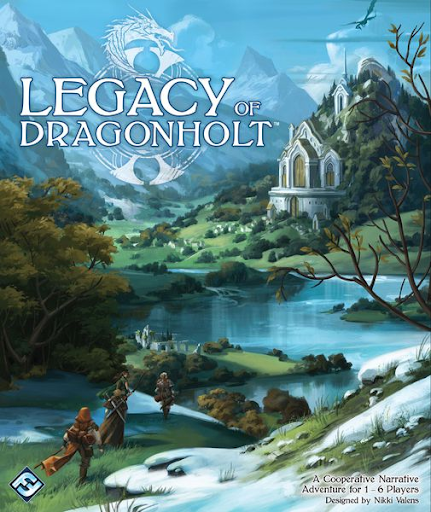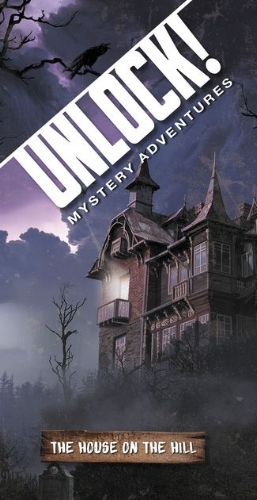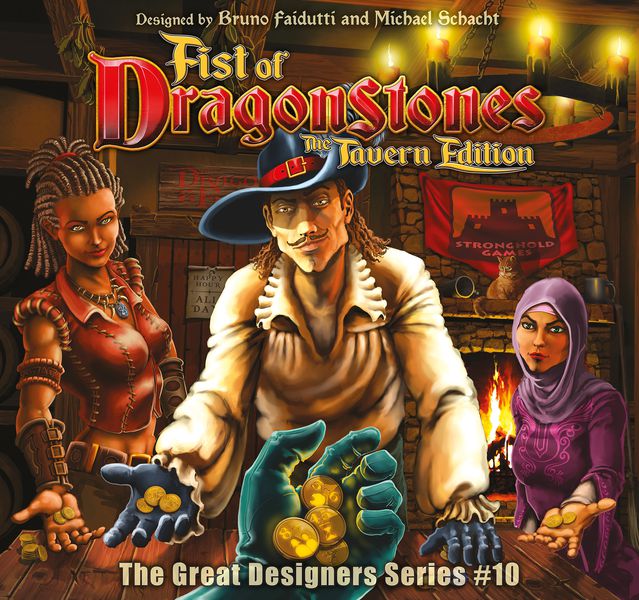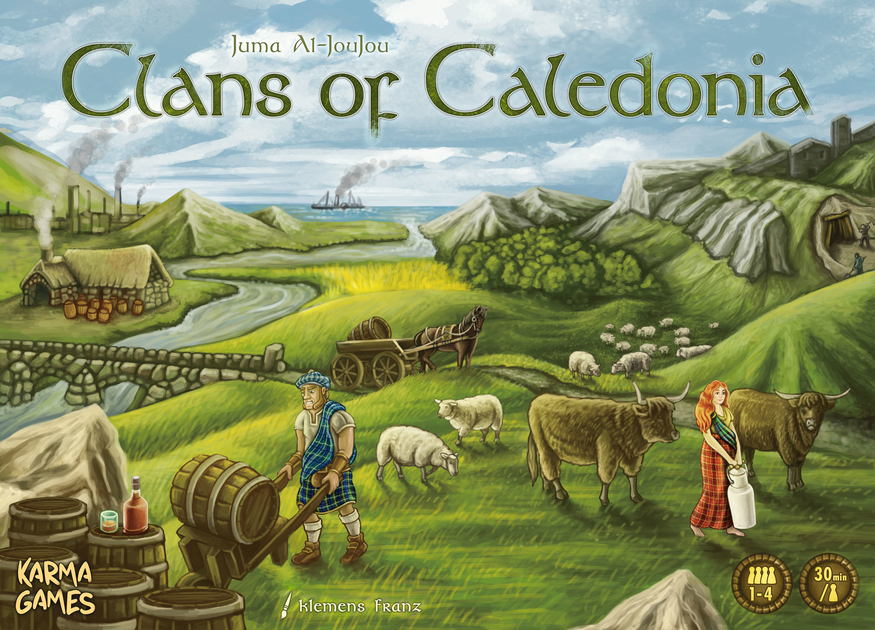Welcome To
Designed by Benoit Turpin
Art by Anne Heidsieck
Published by Blue Cocker Games & Deep Water Games - 2018
1-100 Players ~ 25 Min
Review by Chris Douglas
I recently moved about halfway across the US, from Alaska to Arizona, and I can tell you one thing. Starting over in a new town is tough. Sure, things look familiar at first; maybe just slight shifts in ways of life, different people, geckos instead of squirrels, different kinds of restaurants, but overall, it’s just people being people. But then something snaps you back into reality, like the startling burn you get from your car seat after it’s been sitting in the 100 degree sun all day - You realize, small things make big changes, and Alaska and Arizona are NOT the same.
Which is actually my experience with “Welcome To…”. Sure, you got your cute little Roll n’ Write pencils, and yeah, the neighborhood pages have a familiar No Siesta-like vibe, but then it hits you…… Cards. Effects. Roll n’ Write. Wait, what? No DICE?!?! How can you Roll n’ Write with no dice to roll!?
Welcome To Your Perfect Home!
Something New
In ‘Welcome to…’, Players build a neighborhood utilizing the traditional pencil and paper tools of the Roll n’ Write, though technically, that genre name may not apply. In lieu of rolling dice, players shuffle the address number cards and use the number/color combinations revealed to determine how players’ neighborhood page will be populated and what actions they may take.
During the game, these cards are arranged into 3 stacks. The cool thing is that on one side of the cards you have a number, but the other side has a symbol corresponding to an action. Every round, when the top card of each stack is flipped, the new card “on deck” combined with the action you just revealed makes up the various action/number combos players will select from. You as the player will pick one of these combos, filling in your sheet with new houses, fences, pools, estates…
But wait, there’s a trick to it. You must write the number on a house in one of your three neighborhood rows, but because you are keeping up with the Jones’ you can never write in a lower number than the houses to the left of it, meaning placement and timing all matter, and of course, players must be cognizant of 3 city plans; objectives laid out at the beginning of the game that can be scored when players fill in their neighborhoods as depicted. Failure to be able to place means no action, and actions range from altering numbers and placement restrictions, to giving extra opportunities for points at the end of the game.
Many of these actions relate to the bottom half of their neighborhood page, making several sort of mini-games, keeping up tension and competition with other players. This is a great way to stack victory points for that end of the game comeback! (Sometimes it might be more beneficial to just play for the bonuses). New combinations come up all the time and trying to make each action/number combo work optimally was more brain burning than I expected.
It’s fun to work out how best to completely fill up your neighborhood page and rack up the most victory points, while also imagining your perfect suburban life (I’ve always wanted a pool and in Welcome To my perfect home all I have to do is flip a card? That IS perfect!).
Ultimately, what I discovered was that the card mechanism is an intriguing (and somewhat refreshing) deviation from the Roll n’ Write norm. As number cards get used up, you can anticipate what number cards could be coming up in future rounds, and being able to utilize various bonus effects in conjunction with their paired number gives players more flexibility, and adds something more dynamic than just rolling and wishing for better numbers to come up. I enjoyed developing my ‘burb and not once during the game did I miss rolling dice.
Open House (Presentation)
At first glance Welcome To comes off a little drab. True to the Roll(Flip) n’ Write genre, there are no characters or special abilities, but feeling the neighborhood grow encourages you to create your own stories, which in turn creates a sort of social player interaction. Who and what is going on in each house, who is building a pool in their backyard, which grumpy neighbors are at each others’ throats and why each of them are putting fences up? The acts of growth, expansion, and bringing your neighborhood to life work nicely in conjunction with the colorful, throwback style of the game itself, elevating the quaintly nostalgic theme.
After several plays, what first felt woefully drab now felt wonderfully kisch, and I’m completely endeared to it’s little slice of blissful Americana.
Components…
There are one hundred neighborhood pages included with the game, and although i’m not sure if I even know 100 people to play the game at the supposed “1-100 player count”, I find myself wondering if even 100 sheets for 50 two player games would be enough……. Fortunately, if you run out of player sheets, the publisher made them available to download and print off their website for free.
As far as the layout, the components are simple, vivid, and fully functional. I appreciate the nostalgic presentation and I couldn’t stop thinking about being an architect like Mike Brady, and how he would have felt right at home here. I never had an issue identifying the different effects with their associated colors, and everything is color coded and organized nicely on the Neighborhood page. The cards have a glossy finish and can slide around a bit, but this doesn’t kill the overall gameplay at all.
Final Thoughts
We all know that dice rolls can be brutal, even down right malicious! And rolling garbage all night sucks. In Welcome to…. the gripping hope and/or heavy devastation that can come when a crucial number is revealed (or not revealed) makes for some pretty tense excitement. (think: Is it Door number 1, door number 2 or door number 3?) If you’re not too happy about the revealed cards, the effects alleviate the pressure and allow players to strategically manipulate the numbers and bonuses on their neighborhood page for maximum Victory Points.
That said, players who crave lots of interaction in games won’t get their fix in this ‘hood. Focusing on making your neighborhood “perfect” can also make the game feel solitary as you work on your own developing (and hopefully flourishing) township, and because all players see the next available actions and all players have to work with the same number/action combos that are revealed, everyone shares the same fate as far as luck is concerned. The communities you create may start looking very similar after several playthroughs. Though, with loads of ways to score victory points makes for fantastic (and repeated) trips to the Point Salad bar feel both comfortably familiar and refreshingly new.
So if you’re a Roll n’ Write fan that likes nostalgia and stacking points, and if you are interested in an innovative spin on the genre, i recommend checking out Welcome to…..Your perfect home!
Chris Douglas is the host of our conversational podcast TCbH Hangouts.
Got questions about the game, the review, or the creative process? Let us know any we may tackle it when we publish our audio version with additional thoughts and Q&A on TCbH Reviews.
The Cardboard Herald is funded by the generous support of readers, listeners, and viewers like you. If you'd like to see more content like this, you can support us on Patreon here.



































